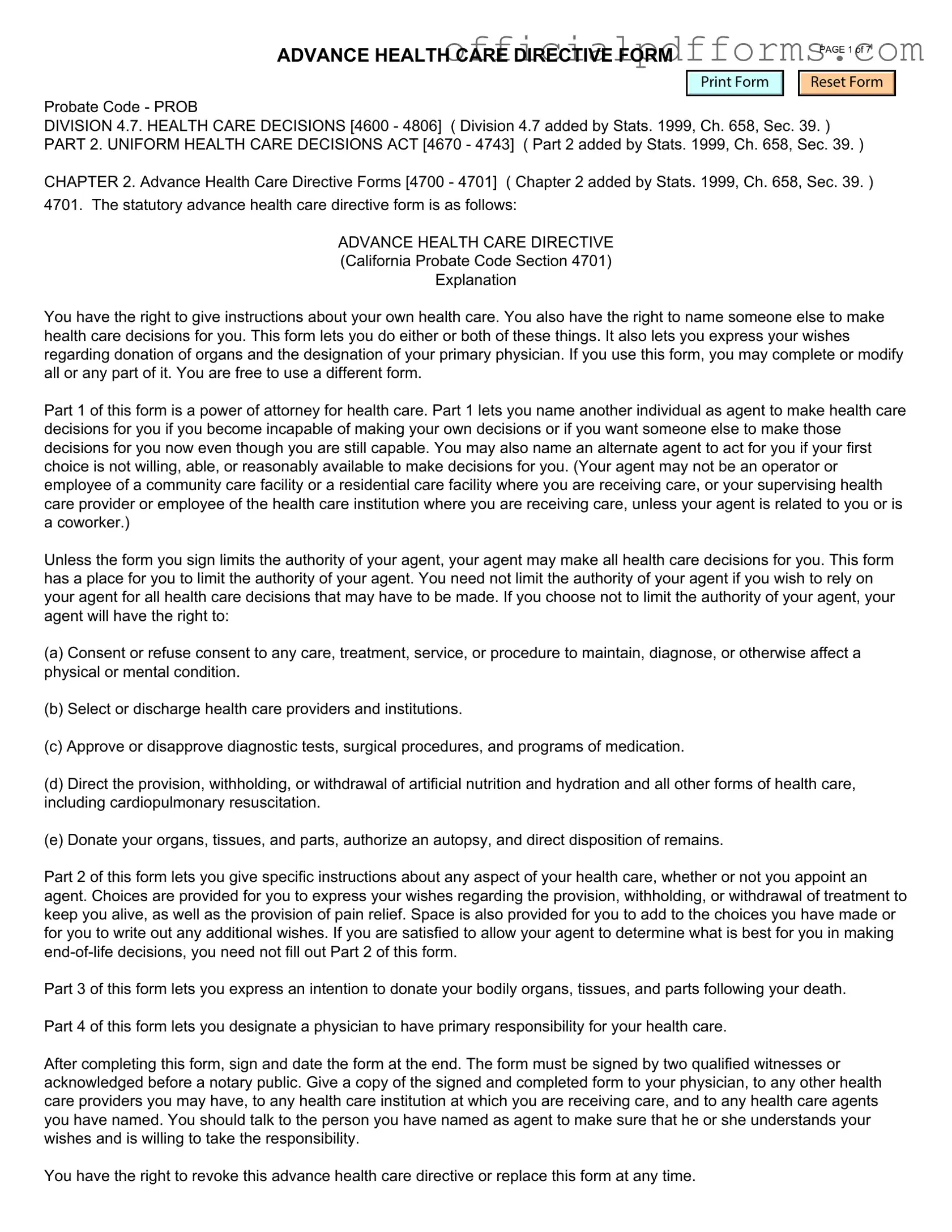Fill in a Valid California Advanced Health Care Directive Form
The California Advanced Health Care Directive form is a legal document that allows individuals to outline their healthcare preferences in the event they become unable to communicate their wishes. This directive empowers you to appoint a trusted person to make medical decisions on your behalf and to specify your treatment preferences. Understanding and completing this form can provide peace of mind for you and your loved ones.
To take the next step in ensuring your healthcare wishes are respected, fill out the form by clicking the button below.
Access Form Online
